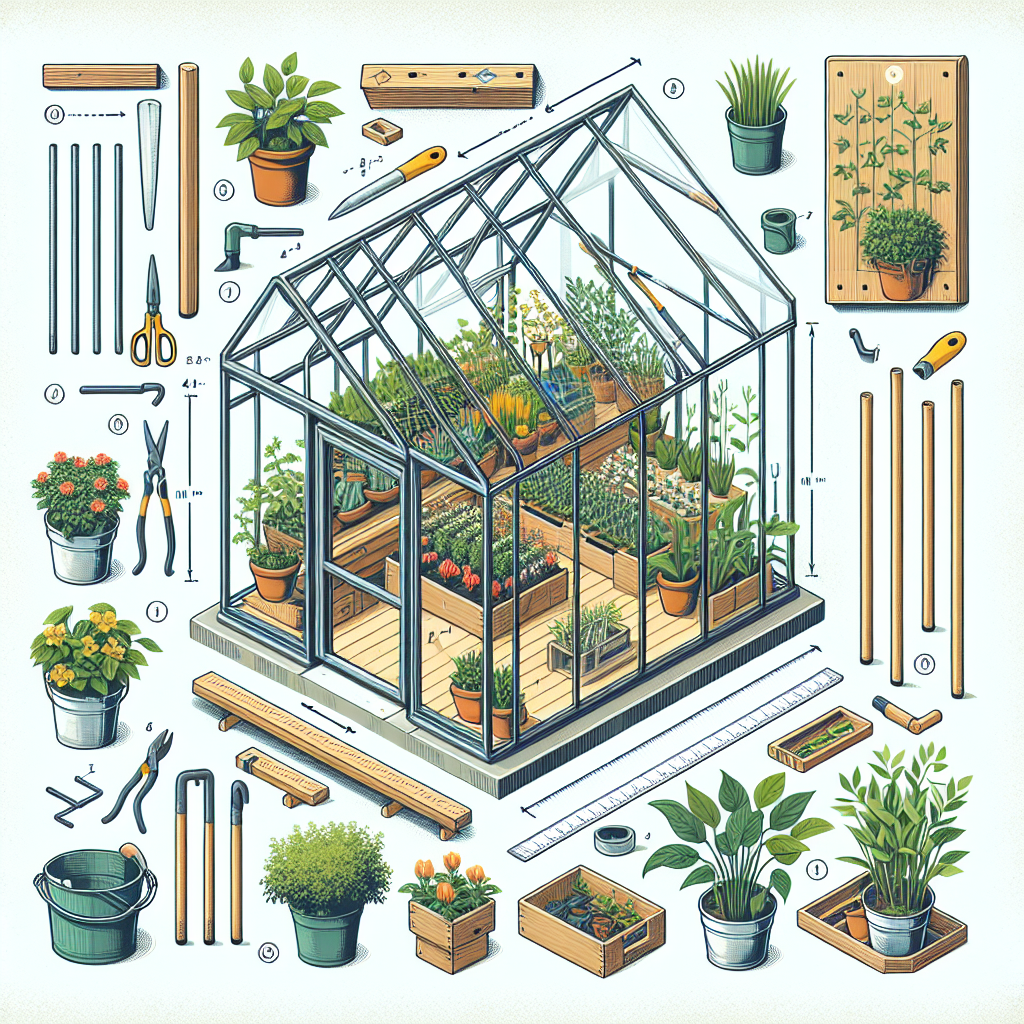
How to build a greenhouse
How to Build a Greenhouse: A Comprehensive Guide
Building a greenhouse can be an incredibly rewarding project for gardeners and horticulture enthusiasts alike. Greenhouses offer the ability to extend your growing season, protect plants from harsh environmental conditions, and provide a controlled environment that promotes healthy plant growth. In this guide, we will walk you through the essentials of how to build a greenhouse, considering various styles, materials, and tips to ensure your project is successful.
Understanding the Benefits of a Greenhouse
Before diving into the details of construction, it's important to understand why building a greenhouse is worthwhile. The benefits include:
- Extended Growing Season: A greenhouse allows you to start plants earlier in the spring and continue growing them later into the fall and winter.
- Controlled Environment: Temperatures, humidity, and light can be managed to create ideal growing conditions.
- Protection: A greenhouse shields plants from pests, animals, and harsh weather such as frost and heavy rain.
- Diverse Planting Options: You can grow a variety of plants that may not thrive in your local climate.
Choosing the Location
The first step in how to build a greenhouse effectively is choosing a suitable location on your property. Here are some factors to consider:
- Sunlight: Select a spot that receives ample sunlight (at least 6-8 hours daily) for most of the day.
- Drainage: Ensure that the area has good drainage to prevent water accumulation.
- Accessibility: The greenhouse should be easily accessible for maintenance, planting, and harvesting.
- Nearby Utilities: Having access to water and electricity can simplify your greenhouse management.
Designing Your Greenhouse
Greenhouses come in various designs, and the one you choose will depend on your preferences, budget, and available space. Below are some popular types of greenhouses:
- Lean-to Greenhouse: This type is attached to an existing structure and is ideal for limited space.
- Freestanding Greenhouse: A stand-alone structure that provides flexibility in design and placement.
- Dome Greenhouse: Features a curvilinear shape that maximizes light and can withstand adverse weather conditions.
- Hoop House: Made of flexible plastic over a frame, these are affordable and simple to install.
Selecting Materials
The materials used for constructing your greenhouse can significantly affect its cost, durability, and efficiency. Here are some common materials:
- Frame Materials:
- Wood: Attractive and easy to work with but requires more maintenance.
- Metal: Strong and durable but can be more expensive.
- PVC: Lightweight and easy to assemble but may not be as sturdy.
- Covers:
- Glass: Provides excellent light transmission but can be heavy and fragile.
- Polycarbonate: Double-walled sheets that offer good insulation and durability.
- Polyethylene: A cost-effective option that lasts for about 4-6 years but may not be as durable as other options.
Building Your Greenhouse: Step-by-Step
Now that you've chosen your design, location, and materials, it’s time to start building. Follow these general steps to construct your greenhouse:
Step 1: Planning and Permits
Check local regulations to see if you need permits. Plan out your dimensions, orientation, and layout for optimal sun exposure.
Step 2: Prepare the Site
Clear the area of dirt, rocks, and debris. Level the ground and ensure proper drainage. This might include digging trenches or creating raised beds.
Step 3: Build the Frame
Construct the frame according to your chosen design. Ensure it is square and level. Secure it well, as the frame needs to withstand wind and weather.
Step 4: Install the Covering
Once the frame is secure, attach the chosen covering material. Ensure it fits snugly to prevent any gaps that could allow heat loss or pests inside.
Step 5: Add Ventilation
Proper ventilation is critical. Install vents at the top and the side walls, or consider an automated system to regulate airflow.
Step 6: Set Up Your Interior
Arrange workstations, planting beds, or shelving for pots and tools. Consider adding a water supply for easy irrigation.
Step 7: Monitor Conditions
Once your greenhouse is up and running, monitor the temperature and humidity levels regularly. Adjust ventilation and shade as necessary to create the best environment for your plants.
Maintaining Your Greenhouse
After building your greenhouse, regular maintenance is key to ensuring it lasts and serves its purpose effectively:
- Clean the Glass or Covering: Regularly clean the exterior to maximize sunlight exposure.
- Inspect for Damages: Check for leaks, rust, or signs of wear and tear.
- Monitor Climate Conditions: Use thermometers and hygrometers to keep track of temperature and humidity.
- Maintain Ventilation: Ensure vents are functioning and adjust for seasonal changes in temperature.
Common Mistakes to Avoid
When figuring out how to build a greenhouse, there are some common pitfalls to be aware of:
- Poor Placement: Failing to assess sunlight and wind direction can hinder plant growth.
- Neglecting Ventilation: Without proper airflow, your greenhouse can overheat quickly.
- Using Low-Quality Materials: This can lead to premature wear and repairs that could have been avoided.
- Overcrowding Plants: Allow sufficient space to prevent competition for resources and ensure good air circulation.
Conclusion: Your Greenhouse Awaits!
Building a greenhouse can open up a world of opportunities for any gardening enthusiast. With careful planning, the right materials, and a little hard work, you'll create an environment where your plants can thrive year-round. Remember to continually learn and adapt your strategies as you discover what works best for your unique conditions. Whether you’re a beginner or an experienced gardener, step into your new greenhouse and grow your passion for plants!
"Gardening is the purest of human pleasures." - Francis Bacon
By Guest, Published on August 13th, 2024